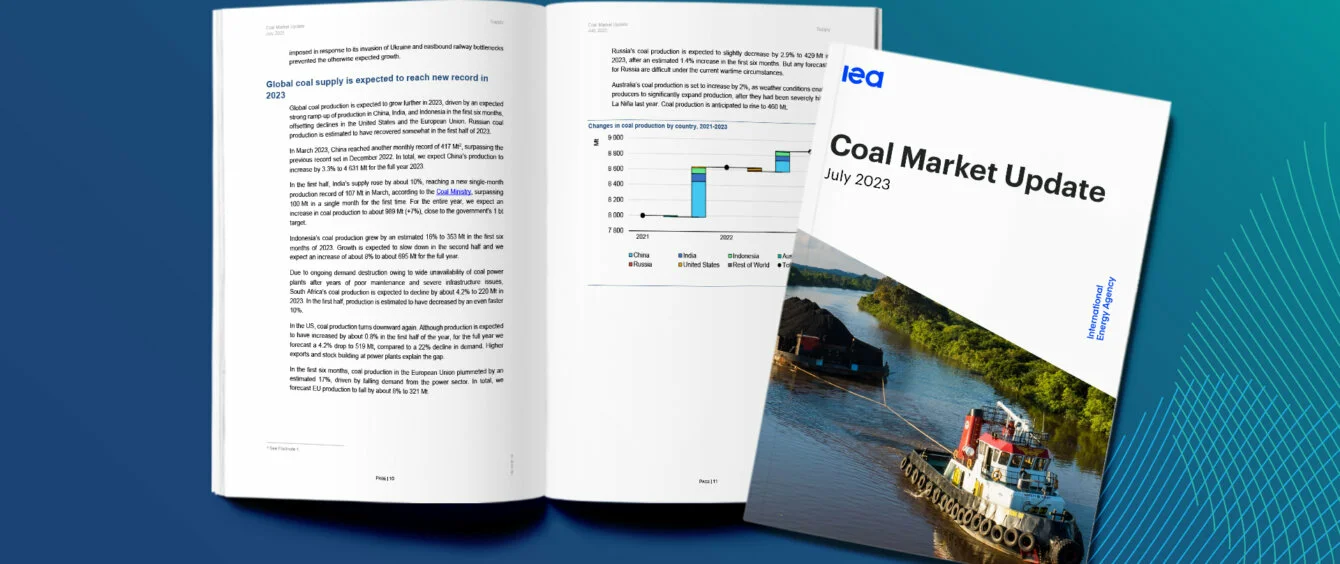While each year now brings new records in renewable energy deployment, the impact on global coal use remains limited, highlighting the urgent need for stronger policies and higher investment to accelerate the growth of clean energy, according to the International Energy Energy (IEA).
As an example, the world deployed a record 294.56 GW of new renewable energy capacity last year.
Demand for the carbon-heavy fuel is expected to remain at these elevated levels through this year and next. The IEA estimates that coal demand will grow by 0.4% this year and fall by just 0.1% in 2024.
Regional trends starkly different
Coal consumption trends differ markedly between regions. European coal demand rose last year, owing to increased coal-fired generation in the face of very high prices for natural gas and weak performance on the part of both nuclear and hydro generation.
The increase in renewable energy capacity, primarily wind and solar power, at just over 57 GW, was insufficient to outweigh these factors.
However, the IEA expects European coal demand to return quickly to its long-term downward trajectory, owing to weak economic growth, more competitive natural gas prices, stronger nuclear and hydro output and continued deployment of new renewables.
Overall, EU coal demand is expected to fall by about 17% this year, equivalent to 372 million tons.
The US, which has been far less directly exposed to the energy sector disruptions of the war in Ukraine, will see coal demand continue to drop. As gas prices returned to low levels in first-half 2023, US coal demand declined by 24% and is expected to fall further in the second half of the year.
Total US coal demand is expected to fall by 357 million tons in 2023, driven by increased renewable energy capacity and more use of gas for power generation.
Developing Asia continues to see coal demand rise
The centre of coal demand growth remains the developing economies of Asia. More mature economies in the region – Japan, South Korea and Australia – expect consumption to fall.
The IEA forecasts that coal demand in China, the world’s largest coal producer and consumer, will increase by 3.5% to 4,679 million tons this year. Indian coal demand is expected to rise by 5% to 1,212 million tons. China and India’s share of global coal use combined will amount to about 70%.
Increased coal use in the two countries reflects factors also apparent last year in Europe and the US, notably low hydro output and high natural gas prices. Both China and India are importers of liquified natural gas (LNG) and both reduced imports of the fuel in favour of boosting domestic coal production and use.
Renewable energy growth needs to accelerate
However, both countries also expanded their renewable energy capacities. China by 140.6 GW and India by 15.8 GW, according to International Renewable Energy Agency data, but in neither case was this sufficient to meet power demand without higher coal-fired generation in the absence of affordable gas imports and weak hydro generation.
To put the level of challenge faced by these countries in perspective, China and India last year together added more renewable energy capacity than the rest of the world combined, yet coal demand still rose.
Globally, rising coal use in developing Asia is outweighing the declines in Europe and North America.
While world consumption of the fuel has plateaued over the last decade, compared with earlier rates of growth, it has yet to demonstrate a clear downward trajectory. This, warns the IEA, has “major implications for efforts to reach international energy and climate goals”.
As a result, in the approach to the COP 28 conference in Dubai, the agency is calling on governments to triple renewable energy capacity by 2030.
